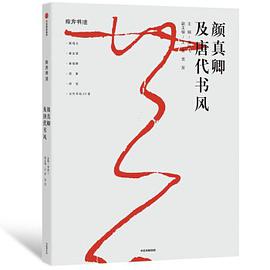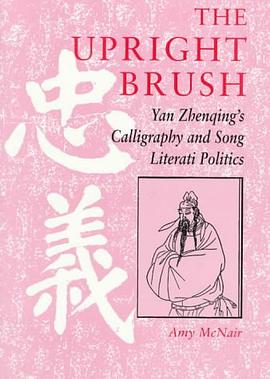颜真卿
顔真卿:王羲之を超えた名筆 豆瓣
8.8 (5 个评分)
作者:
東京国立博物館
毎日新聞社
2019
- 1
東京国立博物館で2019年1月16日より2月24日まで開催する特別展「顔真卿 王羲之を超えた名筆」の公式図録です。
中国の歴史上、東晋時代(317-420)と唐時代(618-907)は書法が最高潮に到達しました。書聖・王羲之(303-361)が活躍した東晋時代に続いて、唐時代には虞世南、欧陽詢、褚遂良ら初唐の三大家が楷書の典型を完成させました。そして顔真卿(709-785)は三大家の伝統を継承しながら、顔法と称される特異な筆法を創出します。王羲之や初唐の三大家とは異なる美意識のもとにつちかわれた顔真卿の書は、後世にきわめて大きな影響を与えました。
特別展「顔真卿 王羲之を超えた名筆」は、書の普遍的な美しさを法則化した唐時代に焦点をあて、顔真卿の人物や書の本質に迫ります。また、後世や日本に与えた影響にも目を向け、唐時代の書の果たした役割を検証します。
全372ページ、判型はA4変型(225×297mm)
激情の書「祭姪文稿」を原寸大で収録。
「祭姪文稿」「自叙帖」現代語訳収録。
全作品釈文収録。
北宋の文人・李公麟の名画「五馬図巻」を全図掲載。
中国の歴史上、東晋時代(317-420)と唐時代(618-907)は書法が最高潮に到達しました。書聖・王羲之(303-361)が活躍した東晋時代に続いて、唐時代には虞世南、欧陽詢、褚遂良ら初唐の三大家が楷書の典型を完成させました。そして顔真卿(709-785)は三大家の伝統を継承しながら、顔法と称される特異な筆法を創出します。王羲之や初唐の三大家とは異なる美意識のもとにつちかわれた顔真卿の書は、後世にきわめて大きな影響を与えました。
特別展「顔真卿 王羲之を超えた名筆」は、書の普遍的な美しさを法則化した唐時代に焦点をあて、顔真卿の人物や書の本質に迫ります。また、後世や日本に与えた影響にも目を向け、唐時代の書の果たした役割を検証します。
全372ページ、判型はA4変型(225×297mm)
激情の書「祭姪文稿」を原寸大で収録。
「祭姪文稿」「自叙帖」現代語訳収録。
全作品釈文収録。
北宋の文人・李公麟の名画「五馬図巻」を全図掲載。
The Upright Brush 豆瓣
作者:
Amy McNair
University of Hawaii Press
1998
- 2
In the history of Chinese calligraphy, few are more famous than the eighth-century statesman Yan Zhenqing (709-785). His style is still taught today as a standard, and Chinese bookstores the world over stock inexpensive reproductions of his works for sale as copybooks.
Yet Yan's style cannot be called conventionally attractive. "Correct," "severe," "serious," "forceful" are terms habitually applied to describe his writing--rarely has his calligraphy been called graceful or beautiful. How, then, did Yan earn such an eminent place in the history of art?
In The Upright Brush, Amy McNair argues for the political rather than purely aesthetic basis for Yan Zhenqing's artistic reputation. She shows how his prominent position was made for him in the eleventh century by a handful of influential men who sought to advance their own position by associating themselves with Yan's reputation for uprightness. Equating style with personality, they adopted Yan's calligraphic style as a way to clothe themselves in his persona.
Sophisticated, informed, and intelligent, The Upright Brush illuminates an episode (one of many) in the history of Chinese culture where the creative reinterpretation of the past was used for contemporary political means. It will be eagerly welcomed by all scholars of Chinese culture and history, as well as by those interested in the making and reading of art.
Yet Yan's style cannot be called conventionally attractive. "Correct," "severe," "serious," "forceful" are terms habitually applied to describe his writing--rarely has his calligraphy been called graceful or beautiful. How, then, did Yan earn such an eminent place in the history of art?
In The Upright Brush, Amy McNair argues for the political rather than purely aesthetic basis for Yan Zhenqing's artistic reputation. She shows how his prominent position was made for him in the eleventh century by a handful of influential men who sought to advance their own position by associating themselves with Yan's reputation for uprightness. Equating style with personality, they adopted Yan's calligraphic style as a way to clothe themselves in his persona.
Sophisticated, informed, and intelligent, The Upright Brush illuminates an episode (one of many) in the history of Chinese culture where the creative reinterpretation of the past was used for contemporary political means. It will be eagerly welcomed by all scholars of Chinese culture and history, as well as by those interested in the making and reading of art.


